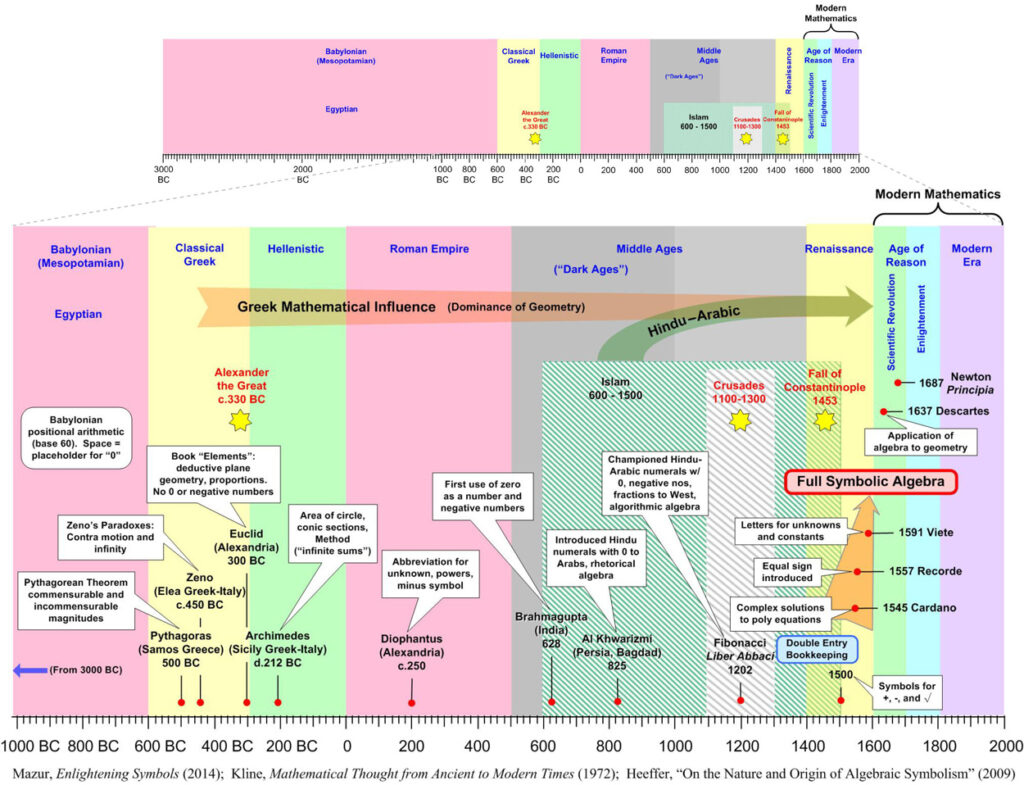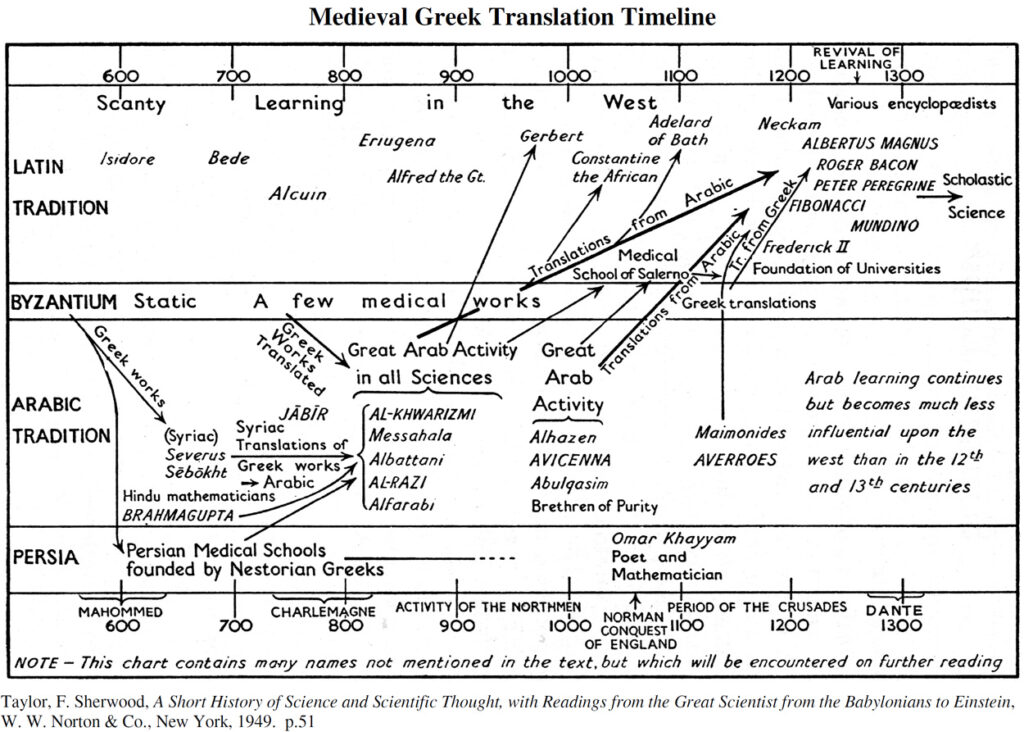As I am sure is common with most mathematicians, I had become interested in the history of the development of mathematical symbols, first for numbers (numerals) and then for algebra (symbolic algebra). Joseph Mazur’s book Enlightening Symbols provided an excellent history of this evolution. His focus on the development and significance of symbolic algebra in the Renaissance was especially illuminating. I also augmented Mazur’s information with details from Albrecht Heeffer’s work.
Such a subject cries out for a timeline to appreciate the order and timing of discoveries, which Mazur provided, concentrating on the Renaissance. I decided to both simplify Mazur’s version and expand it to cover the evolution of numbers and their notation, as well as to set the whole enterprise in the context of historical periods. I relied further on Kline’s 1972 history of math. My designation of historical periods represents the Western bias of my formal education, but I can’t think of a viable alternative at this late stage. The boundaries of these periods are fuzzy, or one might even say fractal in that they often varied geographically. Furthermore the periods are meant to be chunky for ease of recall and to avoid the controversies of multiple experts.
At the heart of such a presentation is the question of sources and evidence, as well as who influenced whom versus the independence of discoveries. This is a massive scholarly tangle beset on all sides by controversy. Cultural pride and prejudice often cloud objective assessment of the frequently vague and conflicting evidence. For example, for years Western bias assumed that all mathematics basically derived from the Greeks, even if it detoured through the Arabs. There certainly was cross-fertilization between West and East, especially with astronomy, but we now know that pivotal discoveries came from the East, such as the number zero and negative numbers. (For my crude purposes I consider the “West” to refer mainly to Latin, largely Roman Catholic, western Europe, and the “East” to refer mainly to Greek, Byzantine, Orthodox Christian eastern Europe, followed by the multi-religious Middle East (Syria, Iran/Persia), South Asia (India), and East Asia (China).)
Hopefully my timeline reveals some important historical features.
For more explanation see Symbolic Algebra Timelines
Here is another timeline that provides more detail at a critical stage in history.
(Update 9/9/2024) How Ancient India Shaped The West


